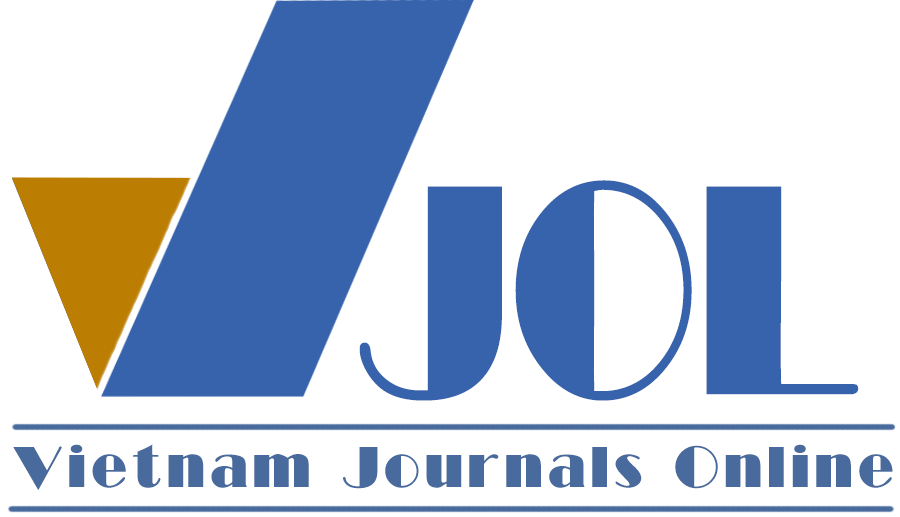Forest land use contribution to livelihoods and food security of Nghe An’s ethnic people: Lessons learned for the REDD+ program
Authors
DOI: https://doi.org/10.57110/jebvn.v4i1.261Keywords:
Livelihoods, Nghe An, REDD+, shifting cultivationReferences
Aju, P. C. (2014). The role of forestry in agriculture and food security. American Journal of Research Communication, 2(6), 109-121.
Caspersen, L., Gombert, A. J., Hommels, M., & Deller, M. (2018). Utilizing the nutritional potential and secondary plant compounds of neglected fruit trees and other plant species of the walnut-fruit forests in Kyrgyzstan. World Agroforestry - Research Data Repository. https://agris.fao.org/agris-search/search.do?recordID=QN2019001259407
Chamberlain, J. L., Darr, D., & Meinhold, K. (2020). Rediscovering the contributions of forests and trees to transition global food systems. Forests, 11(10), 1098. https://doi.org/10.3390/f11101098
Chau Khe People Committee. (2023). The annual social economic report in 2023.
Chazdon, R. L., Harvey, C. A., Komar, O., Griffith, D. M., Ferguson, B. G., & Mart, M. (2009). Beyond reserves: A research agenda for conserving biodiversity in human-modified tropical landscapes. Biotropica, 41(2), 142–153. https://doi.org/10.1111/j.1744-7429.2008.00471.x
Guerrero, M. C., Razal, R. A., & Ramnath, M. (2015). Non-timber forest products for food security, income generation and conservation in Asia. XIV World Forestry Congress. https://www.researchgate.net/publication/281776274_Non-Timber_Forest_Products_for_Food_Security_Income_Generation_and_Conservation_in_Asia
Ha, T. T. T. (2015). Challenges in implementing REDD+ and recommendations for forest policies in Vietnam. Journal of Forest Science and Technology, 1-2015.
Härkönen, M., & Vainio-Mattila, K. (1998). Some examples of natural products in the Eastern Arc Mountains. Journal of East African Natural History, 87, 265-278. https://doi.org/10.2982/0012-8317(1998)87[265:SEONPI]2.0.CO;2
Kajembe, G. C., Mwenduwa, M. I., Mgoo, J. S., & Ramadhani, H. (2000). Potentials of non-wood forest products in household food security in Tanzania: The role of gender-based local knowledge. Gender, Biodiversity and Local Knowledge System. http://41.73.194.142/handle/123456789/1250
Lalaina, C. R., Kazuhiro, H., & Mitsuru, Y. (2011). Forest conservation and livelihood conflict in REDD: A case study from the corridor Ankeniheny Zahamena REDD project, Madagascar. International Journal of Biodiversity and Conservation, 3(12), 618-630.
Luc Da People Committee. (2023). The annual social economic report in 2023.
Miller, D. C., Munoz-Mora, J. C., Rasmussen, L. V., & Zezza, A. (2020). Do trees on farms improve household well-being? Evidence from national panel data in Uganda. Frontiers in Forests and Global Change, 3, Article 101. https://doi.org/10.3389/ffgc.2020.00101
Montreal & Eschborn. (2011). Biodiversity and Livelihoods-REDD-plus Benefits. Secretariat for the Convention on Biological Diversity and German Society for International Cooperation (GIZ) GmbH.
Nguyen, D. T., Tran, D. V., & Nguyen, T. L. (2011). Too much focus on forest conservation, too little on food. Policy Brief, RECOFTC. https://forestindustries.eu/sites/default/files/userfiles/1file/RECOFTC_21July10_B2_web.pdf
Nyambo, A., Nyomora, A., Ruffo, C. K., & Tengnas, B. (2005). Fruits and nuts: Species with potential for Tanzania. Nairobi: Regional Land Management Unit, World Agroforestry Centre-Eastern and Central Africa Regional Programme.
Raj, A., Jhariya, M. K., Khan, N. (2022). The importance of forest for soil, food, and climate security in Asia. In: Öztürk, M., Khan, S.M., Altay, V., Efe, R., Egamberdieva, D., Khassanov, F.O. (eds), Biodiversity, Conservation and Sustainability in Asia. Springer, Cham.
Ruffo, C. K., Birnie, A., & Tengnäs, B. (2002). Edible wild plants of Tanzania. Nairobi, Kenya: Swedish International Development Cooperation Agency (Sida).
Temu, R. P. C., & Msanga, H. P. (1994). Available information and research priorities for indigenous fruit trees in Tanzania. In Proceedings of the Regional Conference on the Indigenous Fruit Trees of the Miombo Ecozone of Southern Africa (pp. 106-111). Mangochi, Malawi: ICRAF.
Downloads
Additional Files
Published
Abstract View
PDF Downloaded
How to Cite
Issue
Section
License
Copyright (c) 2024 Nguyễn Đình Tiến

This work is licensed under a Creative Commons Attribution-NonCommercial 4.0 International License.
by VNU Journal of Economics and Business






